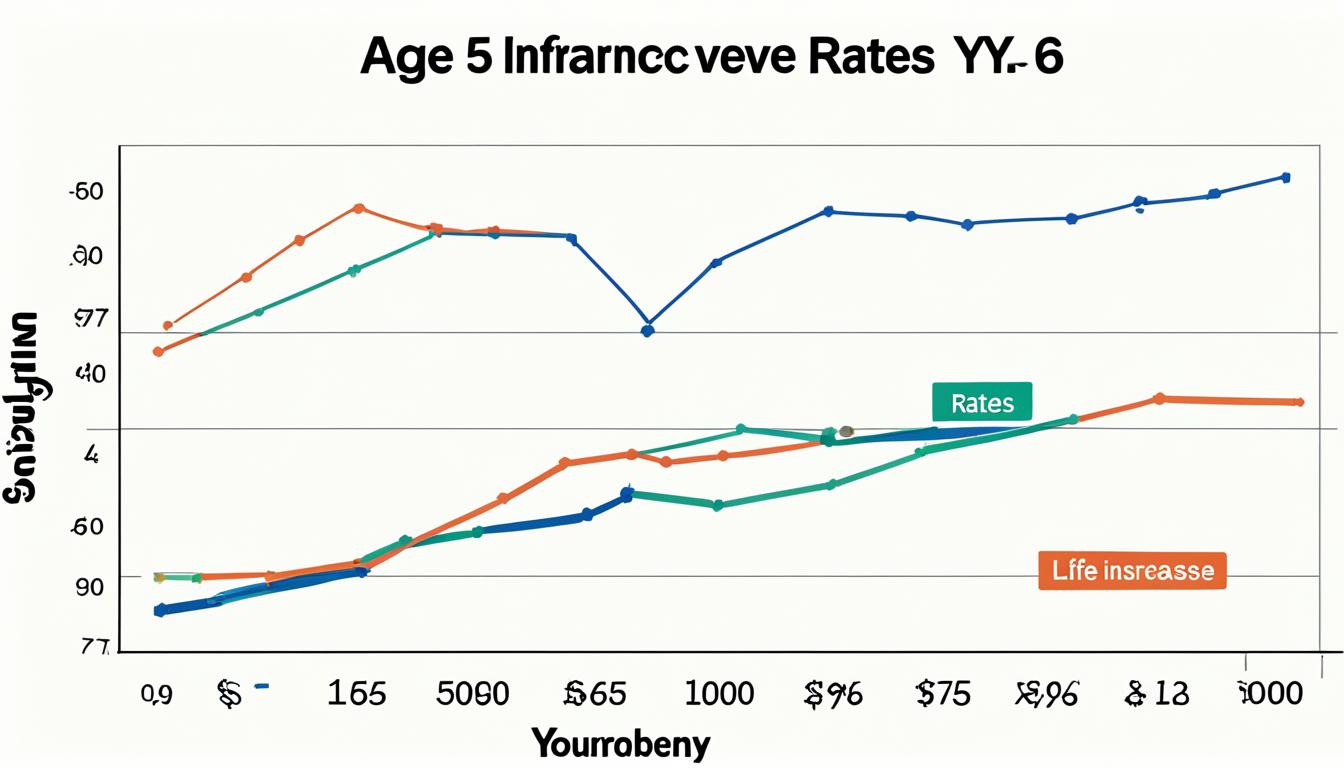A life insurance retirement plan (LIRP) is a valuable tool that can help you secure your financial future and build a substantial retirement savings. With its tax-advantaged nature, a LIRP offers a unique opportunity to protect your loved ones while growing your retirement nest egg. In this article, we will delve into the benefits and workings of a LIRP, exploring who can benefit from this type of retirement plan.
Key Takeaways:
- A life insurance retirement plan (LIRP) provides secure financial benefits for your retirement savings.
- It offers tax advantages and a death benefit for your loved ones.
- A LIRP allows you to use the cash value accumulated in a permanent life insurance policy to supplement your retirement income.
- Individuals who have maximized contributions to traditional retirement plans and have significant financial goals can benefit from a LIRP.
- Consider the associated costs and alternatives to determine the best retirement savings strategy.
What is a Life Insurance Retirement Plan (LIRP)?
A life insurance retirement plan, also known as a LIRP, is a powerful financial strategy that combines the benefits of permanent life insurance coverage with the opportunity to accumulate cash value over time. Unlike term life insurance, which provides coverage for a specific period, permanent life insurance policies, such as whole life or universal life, offer lifelong protection and a cash value component that grows over time.
With a LIRP, a portion of the premiums you pay goes towards the cost of insurance coverage, while the rest is allocated to the cash value account. This cash value grows tax-deferred, meaning you don’t have to pay taxes on the growth until you withdraw funds or take out policy loans. Over time, the cash value can accumulate and serve as a source of tax-advantaged retirement savings.
The cash value in a LIRP can be invested in various options offered by the insurance company, such as mutual funds or indexed accounts. This provides the potential for higher returns compared to traditional retirement savings vehicles like IRAs or 401(k)s, depending on the performance of the underlying investments.
One of the key advantages of a LIRP is its death benefit, which provides financial protection for your loved ones in the event of your passing. If you pass away while the policy is in force, the death benefit is paid to your beneficiaries tax-free. This can help replace lost income, cover final expenses, and provide a legacy for future generations.
Tax Advantages of a LIRP:
- Tax-deferred growth: The cash value in a LIRP grows tax-deferred, meaning you don’t have to pay taxes on the investment gains until you withdraw the funds.
- Tax-free withdrawals and loans: You can access the cash value of a LIRP through tax-free withdrawals or policy loans. This can provide a source of tax-advantaged income during retirement.
- Tax-free death benefit: The death benefit paid to your beneficiaries is typically income tax-free, providing a financial safety net for your loved ones.
It’s important to note that a LIRP is not designed to replace traditional retirement savings vehicles like IRAs or 401(k)s. Instead, it is meant to complement these plans and provide an additional avenue for tax-advantaged retirement savings. The flexibility, death benefit protection, and potential for tax-free income make a LIRP an attractive option for individuals looking to secure their financial future.
How Does a Life Insurance Retirement Plan Work?
In a Life Insurance Retirement Plan (LIRP), a portion of your premium payments is allocated to a savings account known as the cash value. Over time, the cash value grows at a fixed interest rate, accumulating tax-deferred. The cash value serves as the foundation for the various retirement benefits provided by the LIRP.
1. Overfunding the Cash Value
One strategy to maximize the benefits of a LIRP is to overfund the cash value. By contributing more than the minimum required premium, you can accelerate the growth of the cash value. Overfunding allows for more significant potential accumulation and may result in a higher retirement income.
2. Borrowing Against the Cash Value
An attractive feature of a LIRP is the ability to borrow against the cash value. You can take out a loan from the insurance company, using your cash value as collateral. This loan can be an attractive source of funds for emergencies or other financial needs. It is important to note that borrowing against the cash value may reduce the death benefit and can have potential interest costs if not repaid.
3. Withdrawing Cash Value
In certain situations, you may choose to withdraw cash from the accumulated cash value of your LIRP. These withdrawals can provide you with additional income during retirement or for other financial goals. However, it’s essential to be mindful of any potential tax consequences and consider the impact on the death benefit and the long-term sustainability of the policy.
Overall, a LIRP offers flexibility in how you can utilize the cash value for retirement benefits. Whether you choose to overfund, borrow against, or make withdrawals from the cash value, it’s crucial to understand the specific provisions and limitations of your LIRP policy.
Who Should Get a Life Insurance Retirement Plan?
A life insurance retirement plan (LIRP) can be a valuable addition to your retirement strategy, especially if you have already maximized your contributions to traditional retirement plans like 401(k)s or IRAs. A LIRP serves as a supplemental retirement savings vehicle, allowing you to further secure your financial future.
One of the key advantages of a LIRP is its ability to provide protection for your loved ones in the event of a tragedy. The death benefit provided by a LIRP ensures that your financial dependents are taken care of, even if you are no longer there to support them.
Moreover, a LIRP can also be an attractive option for individuals with significant financial goals for retirement that go beyond the contribution limits imposed by tax-advantaged retirement accounts. By utilizing a LIRP, you can continue saving and investing in a tax-advantaged manner to achieve your retirement goals.
Ultimately, the decision to get a LIRP depends on your individual circumstances, goals, and risk tolerance. Consulting with a financial professional can help you evaluate whether a LIRP aligns with your retirement strategy and can provide personalized guidance tailored to your needs.
LIRP Benefits:
- Supplemental retirement savings option
- Financial protection for loved ones
- Ability to save beyond contribution limits
LIRP Considerations:
- Costs associated with a LIRP
- Evaluating suitability based on individual circumstances
- Risks and potential drawbacks
“A life insurance retirement plan can be a valuable addition to your retirement strategy, especially if you have significant financial goals that go beyond the limits of traditional retirement accounts.” – Financial Advisor

| Retirement Strategy | Advantages | Considerations |
|---|---|---|
| LIRP |
|
|
| 401(k) |
|
|
| IRA |
|
|
How Much Does a Life Insurance Retirement Plan Cost?
The cost of a Life Insurance Retirement Plan (LIRP) can vary depending on several factors. These include your age, health condition, coverage goals, and the insurance company you choose. When it comes to LIRPs, premiums are determined based on these factors.
It’s important to note that in addition to premiums, there may be other fees associated with a LIRP. Administrative fees and expense fees are examples of such fees. These costs may be incurred for the management and maintenance of the policy.
Riders are another factor that can impact the cost of a LIRP. Riders are optional add-ons that enhance the policy with additional coverages or benefits. While they can provide added protection or customization, they may also increase the overall cost of the LIRP.
Finally, when considering the cost of a LIRP, it’s crucial to take into account any potential tax implications. For example, surrendering the policy or taking out excessive withdrawals may result in taxes owed. It’s essential to understand the potential tax consequences and consult with a tax professional before making any decisions.
Overall, the cost of a LIRP is dependent on various factors, and it’s important to evaluate your individual circumstances and financial goals to determine if the benefits outweigh the expenses.
Pros and Cons of a Life Insurance Retirement Plan
Like any financial product, a Life Insurance Retirement Plan (LIRP) has its pros and cons. It’s important to weigh these factors when considering if a LIRP is the right retirement savings option for you.
Pros of a Life Insurance Retirement Plan
- Tax advantages: One key benefit of a LIRP is the potential for tax-free income in retirement. Withdrawals from the cash value of a LIRP are generally not taxed, allowing you to maximize your retirement income.
- Death benefit: A LIRP provides a tax-free death benefit for your beneficiaries. This ensures financial protection for your loved ones in the event of your passing.
- No contribution limits: Unlike other retirement savings options, a LIRP does not have strict contribution limits. This means you have the flexibility to contribute as much as you want, potentially increasing your retirement savings.
- No required minimum distributions (RMDs): With a LIRP, you don’t have to take required minimum distributions once you reach a certain age, allowing your cash value to continue growing tax-deferred for longer.
Cons of a Life Insurance Retirement Plan
- Higher premiums and fees: Compared to other retirement savings options, a LIRP may have higher premiums and fees. It’s important to carefully consider and understand the costs associated with a LIRP before making a decision.
- Reduction of death benefit: If you make withdrawals or take out loans against the cash value of a LIRP, it can potentially reduce the death benefit. This means your beneficiaries may receive a smaller payout when you pass away.
- Potential policy lapse: If the cash value of your LIRP drops below a certain minimum level, there is a risk of policy lapse. This means you may lose the coverage and benefits provided by the LIRP.
It’s essential to assess both the advantages and disadvantages of a Life Insurance Retirement Plan to determine if it aligns with your financial goals and retirement strategy.

| Pros | Cons |
|---|---|
| Tax advantages | Higher premiums and fees |
| Death benefit | Reduction of death benefit |
| No contribution limits | Potential policy lapse |
| No required minimum distributions (RMDs) |
Comparing LIRPs to 401(k)s and IRAs
When planning for retirement, it’s important to consider all available options and choose the strategy that best suits your needs. Life Insurance Retirement Plans (LIRPs) can be used in conjunction with traditional retirement plans like 401(k)s and Individual Retirement Accounts (IRAs) to enhance your savings and secure a financially stable future.
Unlike employer-sponsored 401(k) plans, LIRPs are individually managed and do not offer employer matching contributions. However, LIRPs provide unique benefits that can supplement your retirement savings.
“LIRPs offer flexibility and potential for higher savings, without the contribution limits imposed on traditional retirement plans by the IRS.”
One of the key advantages of LIRPs is that they do not have contribution limits set by the IRS. This means that you have the potential to save more for your retirement compared to traditional plans like 401(k)s and IRAs. However, it’s important to note that overfunding a LIRP beyond certain limits may result in different tax implications.
Comparing LIRPs, 401(k)s, and IRAs
| LIRP | 401(k) | IRA | |
|---|---|---|---|
| Employer Matching Contributions | No | Yes | No |
| Contribution Limits | No | Yes | Yes |
| Tax-deferred Growth | Yes | Yes | Yes |
| Withdrawal Penalty | Varies | Yes | Yes |
| Death Benefit | Yes | No | No |
The choices between a LIRP, 401(k), and IRA depend on your individual circumstances and financial goals. While all three options offer tax-deferred growth, LIRPs provide the additional benefit of a death benefit to protect your loved ones. Conversely, 401(k)s and IRAs may offer the advantage of employer matching contributions, which can significantly boost your savings.
“By understanding the differences and benefits of each retirement plan, you can make an informed decision that aligns with your long-term financial goals.”
Consulting with a financial professional can provide personalized guidance based on your specific needs and help you create a comprehensive retirement strategy that encompasses LIRPs, 401(k)s, IRAs, or a combination of these options.

Alternatives to a Life Insurance Retirement Plan
While a LIRP can be a valuable tool for retirement planning, there are alternative options to consider. Individuals can save for retirement through various alternative retirement savings vehicles, such as:
- Traditional IRAs: Individual Retirement Accounts (IRAs) offer tax advantages and allow individuals to contribute up to a certain limit each year. IRAs provide flexibility in terms of investment options and can be opened at a financial institution.
- Workplace Retirement Plans: Many employers offer retirement savings plans like 401(k)s or 403(b)s. These plans often come with employer matching contributions, allowing employees to maximize their savings with the added benefit of pre-tax contributions.
- Health Savings Accounts (HSAs): HSAs are tax-advantaged savings accounts designed for individuals with high-deductible health plans. Contributions to HSAs are tax-deductible, and withdrawals for qualified medical expenses are tax-free. After age 65, HSA funds can also be used for non-medical expenses without penalty.
- Taxable Investment Accounts: Taxable accounts, such as brokerage accounts, provide individuals with the flexibility to invest in a wide range of assets. Although they don’t offer tax advantages like IRAs or workplace retirement plans, taxable accounts have no contribution limits or withdrawal restrictions.
- Annuities: Annuities are insurance products that provide a guaranteed stream of income during retirement. Depending on the type of annuity, individuals can choose between immediate annuities, which begin payments right away, or deferred annuities, which allow funds to grow over time before starting the income stream.
Each alternative retirement savings option has its own benefits and considerations. The choice of which option to pursue depends on personal circumstances, financial goals, and risk tolerance. Consulting with a financial professional can help individuals determine the most suitable alternative retirement savings approach.

Conclusion
A life insurance retirement plan (LIRP) is a valuable tool for securing a financially stable future and achieving your retirement savings goals. By leveraging the cash value in a permanent life insurance policy, you can supplement your retirement income while ensuring financial protection for your loved ones.
However, it is crucial to carefully evaluate the costs and benefits associated with a LIRP, as well as consider alternative options. Assessing the suitability of a LIRP in relation to your specific financial goals and circumstances is essential for making informed decisions.
Also Read:- Securing Life Insurance For Pre-Existing Conditions: What You Need To Know
To navigate the complexities of retirement planning, it is advisable to seek guidance from a licensed financial professional. They can provide personalized advice and help you develop a comprehensive retirement strategy that aligns with your individual needs and aspirations.
FAQs
Q: What is a life insurance retirement plan (LIRP)?
A: A life insurance retirement plan (LIRP) is a financial strategy that utilizes life insurance to build tax-free retirement savings. It allows policyholders to fund their retirement using a whole life insurance policy that accumulates cash value over time.
Q: How does a whole life insurance policy work as a retirement savings tool?
A: A whole life insurance policy can work as a retirement savings tool by providing a guaranteed death benefit and accumulating cash value that can be accessed during retirement to supplement traditional retirement income.
Q: What are the benefits of using life insurance for retirement?
A: Using life insurance for retirement offers tax advantages, potential for cash value growth, guaranteed death benefit for beneficiaries, and the ability to access funds during retirement without tax implications.
Q: Can I use an LIRP to fund my retirement?
A: Yes, you can use a life insurance retirement plan (LIRP) to fund your retirement by consistently paying premiums, allowing the cash value to grow, and accessing the accumulated funds during retirement without incurring taxes.
Q: What are the different types of life insurance suitable for retirement planning?
A: The different types of life insurance suitable for retirement planning include whole life insurance, universal life insurance, and cash value life insurance policies that offer a combination of insurance coverage and retirement savings benefits.
Q: How can I use life insurance as part of my retirement savings strategy?
A: You can use life insurance as part of your retirement savings strategy by considering policies with cash value accumulation, utilizing the death benefit for beneficiaries, and using the accumulated funds to supplement traditional retirement income.
Q: Why should I consider using a life insurance retirement plan to supplement my retirement?
A: Using a life insurance retirement plan (LIRP) can provide a tax-efficient way to supplement retirement income, offer a guaranteed death benefit, and help secure your financial future during retirement.
Q: What role does a licensed life insurance agent play in setting up an LIRP?
A: A licensed life insurance agent can assist in setting up an LIRP by providing guidance on policy selection, explaining the features of different life insurance plans, and helping to tailor the plan to meet specific retirement savings goals.
Q: Can existing retirement savings be used to fund a life insurance retirement plan?
A: Yes, existing retirement savings can be used to fund a life insurance retirement plan, offering an opportunity to enhance retirement funds through the tax-advantaged growth of the policy’s cash value.
Q: How is a life insurance retirement plan different from traditional retirement savings accounts?
A: A life insurance retirement plan (LIRP) differs from traditional retirement savings accounts by offering a tax-free growth of cash value, a guaranteed death benefit, and the potential to use the accumulated funds during retirement without tax implications.




